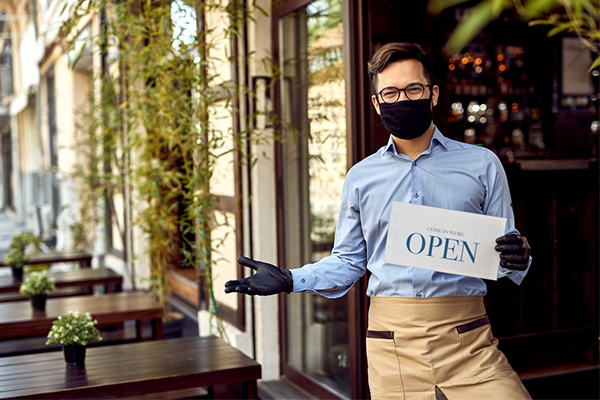A Recipe for Reopening: Restaurant Safety First Training
Robust training protocols and tools protect frontline employees and the public
 It goes without saying that the COVID-19 pandemic has disrupted the leisure habits and livelihoods of people around the world. Those who aren’t essential service workers have been working remotely to slow the spread of the virus, but public-facing staff in sectors such as the food service industry obviously don’t have that luxury. At the same time, restaurant employees have been particularly hard-hit, with more than half being laid off or furloughed, according to the National Restaurant Association.
It goes without saying that the COVID-19 pandemic has disrupted the leisure habits and livelihoods of people around the world. Those who aren’t essential service workers have been working remotely to slow the spread of the virus, but public-facing staff in sectors such as the food service industry obviously don’t have that luxury. At the same time, restaurant employees have been particularly hard-hit, with more than half being laid off or furloughed, according to the National Restaurant Association.
But as society slowly reopens and the hospitality industry begins to ramp up, food safety is still a primary concern. Organizations like the World Health Organization (WHO) and Centers for Disease Control and Prevention (CDC) have mandated food safety guidelines to prevent restaurant servers, cooks, hosts and managers from contracting and spreading the virus.
It is imperative that food service providers train their employees to follow these guidelines in order to safeguard diners and revive the industry. With a focus on hygiene and sanitation, these measures can easily be instilled using a variety of interactive and experiential learning solutions.
Recognizing symptoms
All restaurant employees need to be aware of the symptoms of COVID-19, which include fever, dry cough, fatigue, shortness of breath, muscle aches, and loss of taste and/or smell. Early detection ensures timely treatment and minimizes the risk of exposure to employees and customers.
Effective training does not need to be expensive. Awareness training can be designed with simple rapid authoring tools such as RISE, a drag-and-drop builder for quick development. RISE may be the tool within your budget to swiftly train frontline staff to recognize signs of the virus and protect against its spread.
Ensuring proper hygiene
Employees also require prevention training and documentation. Hand washing, sanitization, and surface disinfection are a must. Non-contact scanners can be used to check for high temperatures. Following personal hygiene and using Personal Protective Equipment (PPE) when handling food or coming in contact with others are expected. The use of interactive video for this type of training provides responsiveness for learners to engage and retain important information that they will need to demonstrate daily.
Physical Distancing
WHO guidelines suggest maintaining a minimum distance of six feet or two meters between individuals. Whether dining is allowed outside only or indoors at limited capacity, tables must be spaced apart appropriately. Employers will have to separate workstations in the kitchen and payment counters. Also, a limited number of employees should work each shift. Using scenario-based training will allow learners to gain valuable insight through real-life situations. They will be able to practice effective techniques and demonstrate decision-making in a safe environment.
Contact tracing
Employers need to have a plan of action in case an employee gets infected. Tracing should be conducted to ensure those who came in direct contact with the infected individual quarantine themselves and monitor symptoms. Any surfaces and objects that the sick individual may have come in contact with should be disinfected. Creating an interactive assessment will allow learners to be asked questions utilizing different activity types. This will enable them to progress through a series of questions gaining knowledge through engaging feedback.
Keeping things running
Even as diners venture out, restaurants will still need to attend to their pick-up and delivery business while adjusting to new realities. Delivery drivers need training on safety guidelines including disposable gloves, sanitization, and “no touch” deliveries. Likewise for customer pickups requiring socially distant, outdoor waiting areas, protocol for pickup counters, and contactless payment options. New tamper-proof, sealed bags for take-out and delivery, strategically placed plexi-glass dividers, and increasingly more food-safety innovations will mean keeping up with constant change.
MicroLearning is the best approach for providing task-based training. Learners are able to quickly target specific topics that are designed to provide short and impactful knowledge. Mobile learning is also a successful tool, allowing employees to learn anywhere at any time especially in the food service industry.
It is an encouraging sign that restaurants are able to reopen in some capacity as infections level off in many jurisdictions. A beloved pastime, dining out is sure to pick up and It is important for food service providers to maintain proper health and safety practices by training their workforce. Only then can restaurants carefully restart their businesses, build a bridge to the new normal, and earn consumer trust.
For more information on food safety training and how KnowledgeWorks Global Learning can create interactive and engaging solutions for your employees, please contact info@kwglobal.com.

